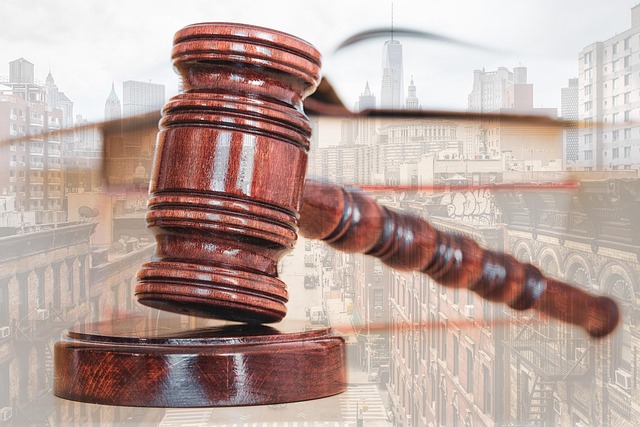Financial fraud prevention involves understanding schemes like identity theft and using tools like data analytics, machine learning, and forensics to detect anomalies. Legal professionals develop defense strategies, while advanced technologies predict fraudulent activities with accuracy. Expert testimony is crucial during the Steps in Criminal Jury Selection Process for fair judgments. A multi-faceted approach includes preventive measures, regular audits, compliance with global regulations, and a robust criminal justice system to hold perpetrators accountable.
Financial fraud is a global concern, with sophisticated schemes evolving constantly. This article offers a comprehensive guide through the intricate world of financial fraud detection. We explore key strategies such as identifying common fraud patterns and red flags, leveraging data analytics and machine learning for accurate predictions, and the crucial role of forensics and expert testimony in legal proceedings. Additionally, we delve into preventive measures and regulatory frameworks that form vital steps in combating fraudulent activities, similar to the meticulous process of criminal jury selection.
- Understanding Common Fraud Schemes and Red Flags
- Data Analytics and Machine Learning in Detection
- Role of Forensics and Expert Testimony
- Preventive Measures and Regulatory Frameworks
Understanding Common Fraud Schemes and Red Flags
Understanding common fraud schemes and red flags is a crucial step in the financial fraud detection process. Fraudsters often employ sophisticated tactics to manipulate individuals or systems, making it essential for professionals to be aware of the latest trends and techniques. Common fraud schemes include identity theft, Ponzi schemes, and white-collar crimes like accounting fraud or investment scams. By recognizing these patterns, experts can identify potential red flags such as unusual financial transactions, suspicious documents, or inconsistent statements.
A robust general criminal defense strategy involves staying informed about evolving fraud tactics. Legal professionals specializing in white-collar defense play a vital role in achieving extraordinary results by providing proactive measures to safeguard against these crimes. Through comprehensive risk assessments and the implementation of stringent internal controls, organizations can deter potential fraudsters and ensure the integrity of their financial systems.
Data Analytics and Machine Learning in Detection
In the realm of financial fraud detection, Data Analytics and Machine Learning have emerged as powerful tools, revolutionizing how we approach high-stakes cases. By employing advanced algorithms, financial institutions can sift through vast amounts of data—from transaction patterns to customer behavior—to identify anomalies that might indicate fraudulent activities. This process involves several steps, beginning with data collection and preprocessing, where raw data from various sources is cleaned and structured for analysis. Subsequently, machine learning models are trained using this prepared data, enabling them to learn patterns and create accurate predictive models.
These models play a pivotal role in navigating complex fraud scenarios, specifically those involving corporate and individual clients. Their unprecedented track record in detecting subtle irregularities has significantly enhanced the accuracy of financial crime investigations. Whether it’s credit card fraud, insurance claims manipulation, or intricate money laundering schemes, data analytics and machine learning provide an analytical edge, ensuring that even the most subtle signs of fraudulent behavior are not overlooked.
Role of Forensics and Expert Testimony
Forensics plays a pivotal role in financial fraud detection, serving as a powerful tool to unravel complex schemes. By employing advanced techniques, forensic experts can extract digital footprints and uncover hidden transactions, providing crucial evidence in high-stakes cases. This process involves meticulous analysis of electronic records, financial statements, and digital media, often using specialized software to reconstruct and interpret data.
Expert testimony is another critical component, where qualified professionals present their findings and offer insights to the jury. This includes explaining intricate financial matters, identifying anomalies, and connecting dots across various stages of the investigative and enforcement process. Such testimony aids in avoiding indictment by ensuring a thorough understanding of the evidence, thus facilitating fair and accurate judgments in all stages of the criminal jury selection process.
Preventive Measures and Regulatory Frameworks
Preventive measures play a pivotal role in combating financial fraud. Organizations should implement robust internal controls, regular employee training on ethical practices, and advanced data analytics to detect anomalies. Furthermore, promoting a culture of transparency and accountability encourages employees to report suspicious activities. Regular audits and independent reviews reinforce these efforts by identifying vulnerabilities and ensuring compliance with regulatory frameworks.
Regulatory bodies worldwide have established stringent guidelines to deter financial fraud, especially in the realm of white-collar defense. These frameworks mandate that companies maintain meticulous records, conduct thorough due diligence on corporate and individual clients, and implement effective anti-money laundering (AML) protocols. Jury trials serve as a critical component in holding perpetrators accountable, with strict procedures in place to ensure fairness and impartiality during the selection process, which is a vital step in combating fraud.
In the relentless fight against financial fraud, a multi-faceted approach is imperative. By understanding common schemes, leveraging advanced data analytics and machine learning, utilizing forensic expertise, and implementing robust preventive measures, we can fortify our defenses. Just as each step in the criminal jury selection process involves careful consideration and scrutiny, so too must we scrutinize financial transactions for anomalies. Through a comprehensive strategy that combines technology, human expertise, and regulatory frameworks, we can navigate this intricate landscape and protect our financial systems from fraudulent activities.






